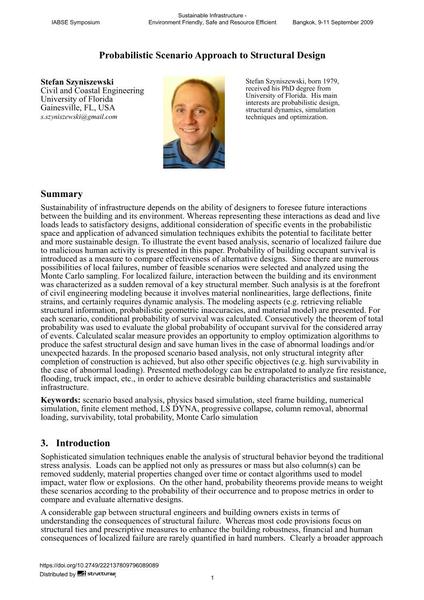|
Abstract:
|
Sustainability of infrastructure depends on the ability of designers to foresee future interactions between the building and its environment. Whereas representing these interactions as dead and live loads leads to satisfactory designs, additional consideration of specific events in the probabilistic space and application of advanced simulation techniques exhibits the potential to facilitate better and more sustainable design. To illustrate the event based analysis, scenario of localized failure due to malicious human activity is presented in this paper. Probability of building occupant survival is introduced as a measure to compare effectiveness of alternative designs. Since there are numerous possibilities of local failures, number of feasible scenarios were selected and analyzed using the Monte Carlo sampling. For localized failure, interaction between the building and its environment was characterized as a sudden removal of a key structural member. Such analysis is at the forefront of civil engineering modeling because it involves material nonlinearities, large deflections, finite strains, and certainly requires dynamic analysis. The modeling aspects (e.g. retrieving reliable structural information, probabilistic geometric inaccuracies, and material model) are presented. For each scenario, conditional probability of survival was calculated. Consecutively the theorem of total probability was used to evaluate the global probability of occupant survival for the considered array of events. Calculated scalar measure provides an opportunity to employ optimization algorithms to produce the safest structural design and save human lives in the case of abnormal loadings and/or unexpected hazards. In the proposed scenario based analysis, not only structural integrity after completion of construction is achieved, but also other specific objectives (e.g. high survivability in the case of abnormal loading). Presented methodology can be extrapolated to analyze fire resistance, flooding, truck impact, etc., in order to achieve desirable building characteristics and sustainable infrastructure.
|

